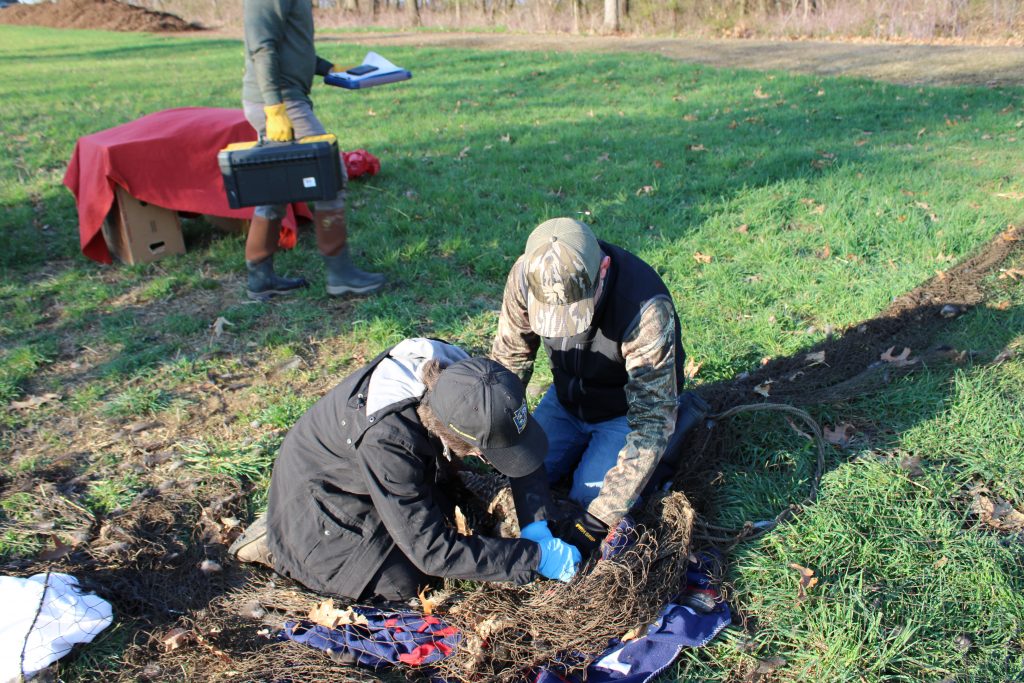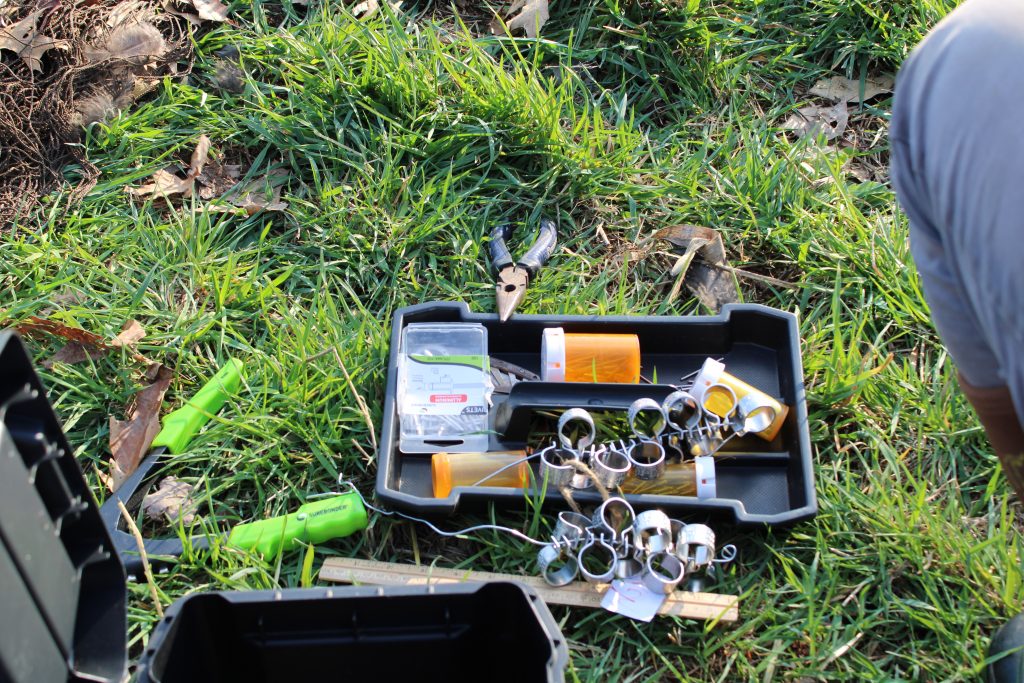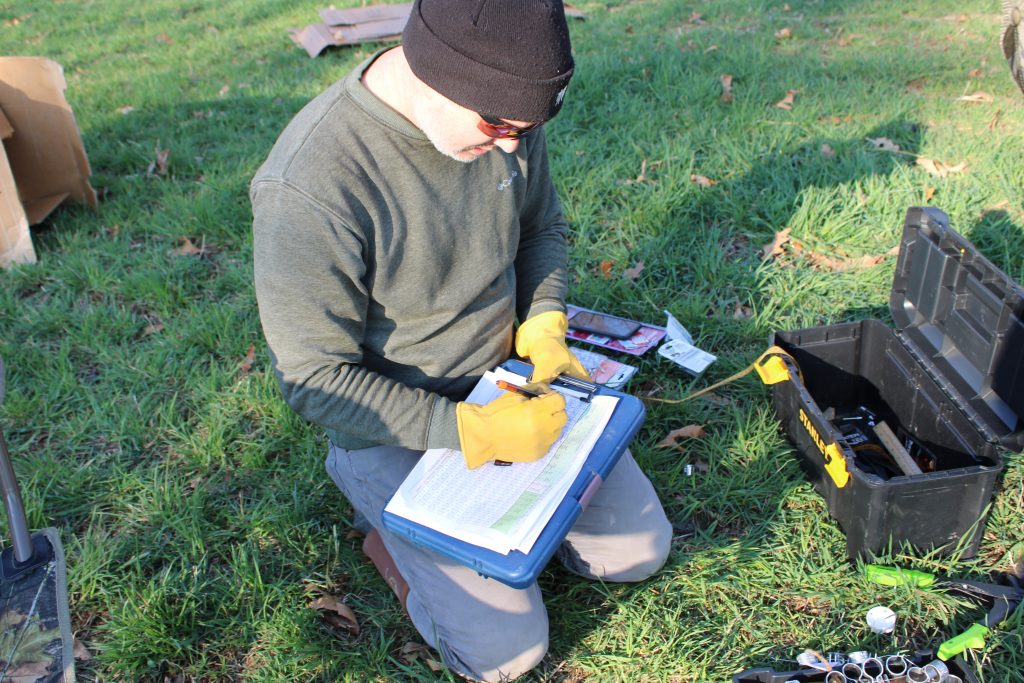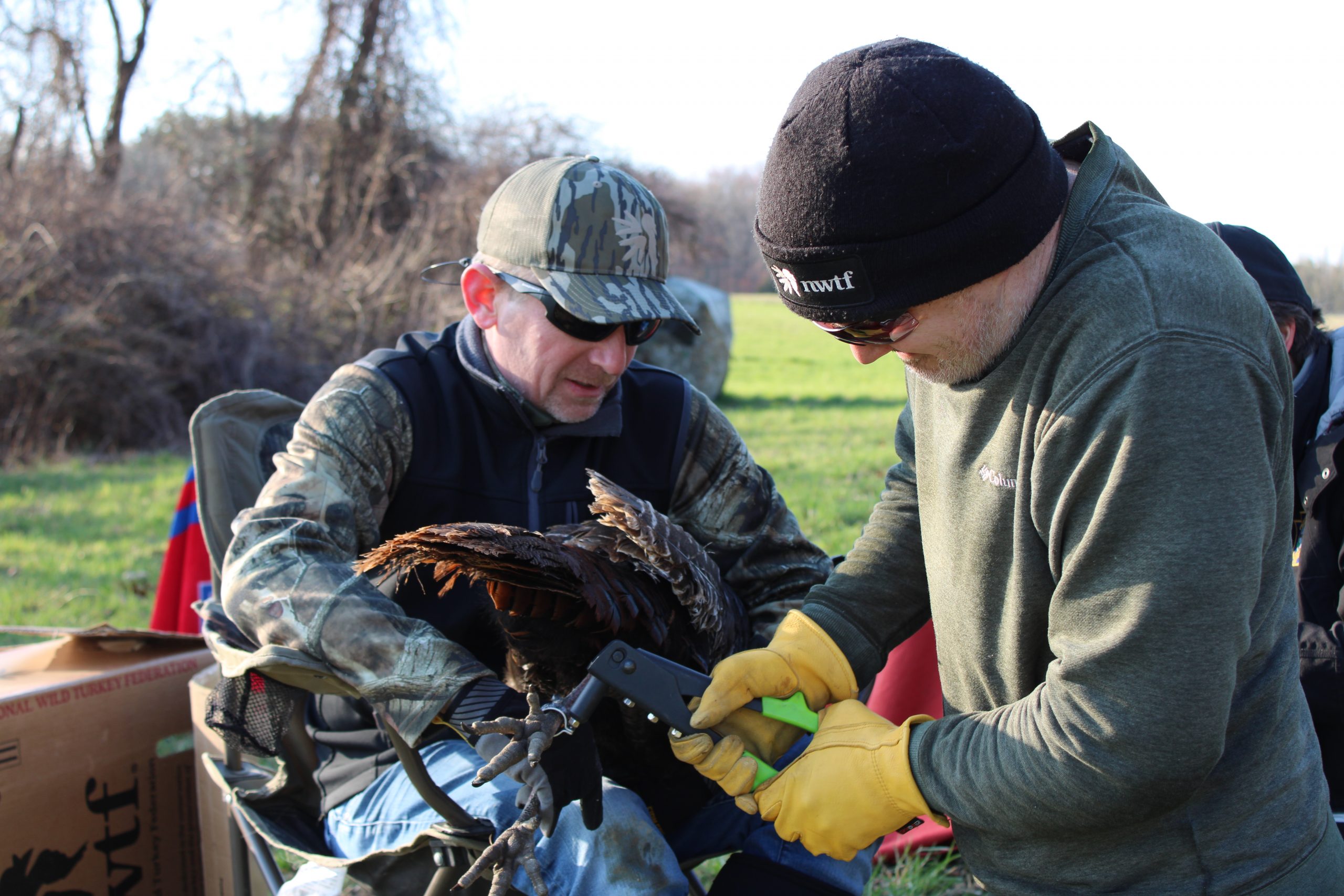Pennsylvania Game Commission Wraps up “Operation Gobbler” for Fifth Year
The Pennsylvania Game Commission drills down on wild turkey management across the Keystone State's 22 management units, providing a deeper insight into how to best manage and conserve wild turkeys.
Just before the sun cracked over the horizon in Pennsylvania's Wildlife Management Unit 5A, NWTF District Biologist Mitch Blake shined the red light from his headlamp onto a small controller, testing the battery and ensuring the rocket net would fire when he pushed the button.
"We're good to go," he said.
Not long after, a symphony of gobbles and yelps helped guide the sun over the horizon. The birds could be heard flying down one by one.
Doug Little, NWTF director of conservation operation for the East, joined Blake in his effort.
The two were assisting the Pennsylvania Game Commission with the agency's annual operational gobbler banding project, informally called Operation Gobbler. Every year, PGC seeks to band over 440 male wild turkeys in the state's 22 different WMUs, aiming for about 10-15 jakes and 10-15 toms from each WMU.
Time lapsed as the two glassed the birds and wondered if they would head to the bait pile of corn.
"It's been a tough winter," Blake explained. “There has been a lot of food in the woods; last year was an excellent year for mast crops, especially oaks, and there's not been a lot of snow, so it's great for turkeys foraging but not great when you're trying to lure them over to bait."
Almost suddenly, a bachelor group of turkeys appeared from below the hill at about 150 yards. Four, five, six, and finally seven—despite the buffet on the forest floor, the birds headed towards Blake's bait pile for breakfast.
Mary Jo Casalena, PGC wild turkey biologist and NWTF National Wild Turkey Technical Committee representative, and PGC Game Warden Trevor Shauf sat watching from their trucks about 300 yards away.
As soon as all seven birds were in range, Blake fired off the rocket net.
Boom!
Wasting no time fidgeting with the pop-up blind's latches and door, the two NWTF biologists tossed the blind over their heads and ran toward the turkeys captured by the net. Casalena and Shauf barreled over to help.
Bird by bird, the team attached a PGC leg band on each turkey, measured spurs and beards and assessed the birds' overall condition. The turkeys had socks placed over their heads to help calm them down and were placed into NWTF holding boxes until it was time to release them in groups.

Banding birds allows PGC to estimate spring gobbler harvest and annual survival rates by age class and WMU. This work enables the agency to drill down and locally manage hunting seasons by WMU, an attentive approach to wild turkey management.

"During a previous study, we acquired statewide spring harvest and annual survival rates, but since then we wanted to determine if they vary widely from WMU to WMU," Casalena said. "Since 2020, we have been leg-banding males in each of our WMUs. The data acquired are used in our population model to get trend information of populations for better management of the species. This will help us with localized management for fall turkey seasons. While the spring season is set statewide, our fall seasons are set according to WMU.

"The WMU that we are in, 5A, had a closed fall season for the last few years, and this fall, we proposed reopening the season. So that shows how specific our turkey seasons can be for the wildlife management unit thanks to our banding program."
PGC's population model, developed in partnership with Pennsylvania State University, incorporates the spring harvest and annual survival rates attained from the banding project (after hunters harvest a banded bird and notify the Commission). The model also includes annual recruitment ratios, commonly known as poults-per-hen, and other important data.
Using advanced modeling techniques, data sets are combined and extrapolated to paint a picture of Pennsylvania's wild turkey population. The model also highlights trends by WMU and allows PGC to conduct WMU-specific management for turkeys, such as closing the fall season or shortening or lengthening it in a specific WMU.
As PGC became seven birds closer to meeting its annual quota for the banding project in WMU 5A, the birds were released in two batches: four birds and then three.
After the birds flew off, Little and Casalena reminisced about their collaboration decades ago. Casalena hired Little 20-something years ago. It was just a mile or two, as the crow flies, from where the two marked a smoke-phase hen with a VHS transmitter as part of Casalena’s first telemetry study as turkey biologist.
"A lot has happened with the wild turkey since then," Little said. "This type of honed-in management of PGC’s banding project is the gold standard, and the NWTF is proud to support the program that ensures the sustainability of the bird we treasure."
Turkey hunters or anyone who finds a banded turkey are asked to call or email PGC using the information on the band and report the band number, date and general area it was found. The reporter receives a certificate with information on when and approximately where it was banded and gets to keep the band.
